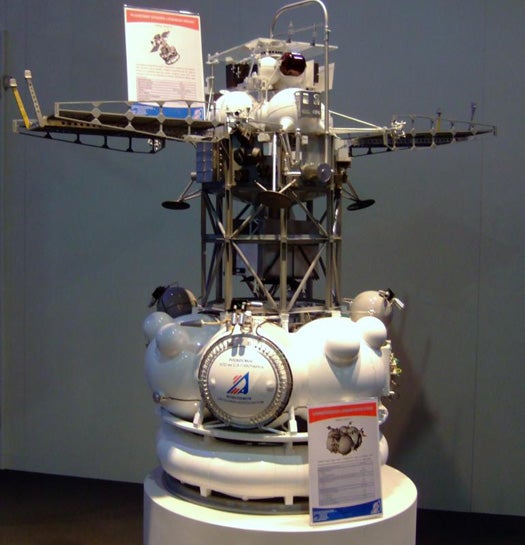Russia’s Phobos-Grunt Mission to Mars is Stuck in Earth Orbit After Engines Fail to Fire
Engineers have three days to save the craft before its batteries run out

A day after the successful launch of the Phobos-Grunt probe from Baikonur Cosmodrome in Kazakhstan, Russian mission handlers are already scrambling to save their spacecraft from the fate that has befallen so many Russian Mars missions. Phobos-Grunt found orbit yesterday but then failed to fire the engines that would put it on a path for the Martian moon Phobos. The probe is now stuck in Earth orbit, and engineers have three days to fix the problem before the batteries run out.
Problems for the multi-year mission arose almost immediately after the spacecraft was dropped into elliptical orbit eleven minutes after launching. The orientation system was supposed to use the stars to turn itself toward Phobos, then initiate two firings of the huge cruise stage attached to the spacecraft that would first lift it from orbit and then set it on a path toward Phobos.
None of this happened.
However, all is not yet lost. “I would not say it’s a failure,” Roscosmos chief Vladimir Popovkin told the media. “It’s a non-standard situation, but it is a working situation.”
Engineers are now racing against the clock the get Phobos-Grunt back online. If it’s a software glitch causing the problem, new commands can be uploaded and it’s likely the mission could be saved. But if it’s a hardware problem, the entire mission might be doomed before it gets out of Earth orbit.
Phobos-Grunt isn’t just Russia’s most ambitious space project in years, but the largest interplanetary science mission ever devised (after Cassini-Huygens) at more than 14 tons. The spacecraft is also carrying Yinghuo-1, China’s first Mars satellite. If lost, Phobos-Grunt would be something like the 16th Mars-related mission sent by Russia to the Red Planet since the ’60s. None of the previous have completed their mission objectives.